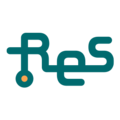General description of WEpods project
Robot Engineered Systems (RES) is developing self-driving shuttle buses called WEpods. In the last few years, we developed software for two WEpods. They are driving at Weeze airport in Germany and Wageningen University campus, in mixed traffic on public roads. Those WEpods are small, 6 person shuttles that drive at limited speed (max 25km/h). The fact that we have a permission to test and operate on public roads makes us quite unique in The Netherlands, the EU, and even worldwide. Currently, we are in the process of building our new, next generation autonomous shuttle bus, as part of the EU subsidized Interreg Automated Transport project. It will be equipped with several cameras, radars, and lidars to provide a clear perception of the world around us. The bus will have space for 16 persons and our goal is to make it drive autonomously up to 50km/h. This increase in speed from 25km/h to 50km/h requires improvements at practically all levels of our current hardware and software stack.
Robot Engineered Systems is part of Robot Robots Company and has two sister companies called Robot Care Systems and Robot Security Systems, respectively developing an elderly care robot and a security robot. Robot Robots Company is a young, fast growing scale-up company, with lots of interesting development projects going on. We all work in the same building, so you will be part of an inspiring and fun engineering team. We are located in Delft, close to the TU Delft and next to the busstop on the rotterdamseweg.
Project description
To plan the vehicle path and speed, the vehicle will need to perceive the current situation (where am I now, where are others around me) and predict the next few seconds of traffic behaviour (what do I expect that other traffic participants will do in the next few seconds, i.e. where will they go). This prediction step has a close relation with their environment. Bicycles and cars are likely to continue follow their lane and might take several directions at intersections. Pedestrians will usually follow the sidewalk, are more likely to cross at a pedestrian crossing, but might also decide to cross the road in certain circumstances without a dedicated pedestrian crossing. A detailed description of the environment is already stored in our semantic map (which defines lanes, intersections, sidewalks, traffic signs, etc.). Our task is to combine the perceived objects (traffic participants) with this semantic map and make a prediction. The internship will focus at exploring different approaches to improve predictions. Mainly of pedestrians and mainly based on heuristics (common sense rules like “people close to a zebra crossing are more likely to cross the road at the zebra crossing”). The main idea here is to prevent false predictions of pedestrians to suddenly go onto the street. The internship will be done using Ubuntu Linux and ROS (Robot Operating System) with Python as the main programming language. C++ and Matlab could also be used.
